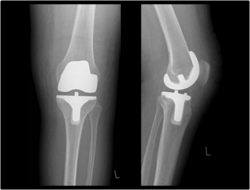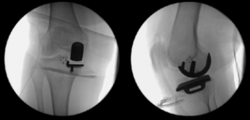The knee osteoarthritis refers to the wear-induced disease of the Knee joint. Although osteoarthritis can affect each joint in the body, but the knee and hip are frequently affected as they bear a large part of the body weight.
Etiology
In Osteoarthritis, the cartilage layer which covers the bone is destroyed either due to malalignment or stress and Trauma.. In the advanced stage, this layer is completely damaged which leads to friction of all the bones with each other. The result is a limited mobility to a stiff joint and considerable pain.
The wear of the cartilage begins not at an advanced age. In general, it is assumed that the wear and tear of the joints starts from the age of 35.
Investigations
A simple X-ray image is enough normally to confirm the diagnosis "Osteoarthritis". In some cases, an additional MRI is required in order to confirm the diagnosis.
Therapy
Advanced Osteoarthritis is not curable. Through physical therapy, we can initially reduce pain, Improve joint movements and with medications we can control pain and reduces the inflammatory process.
Incorrect and disorganized movement patterns can also be resolved by physical training. Depending on the severity of osteoarthritis, however, intervention is sometimes necessary.



